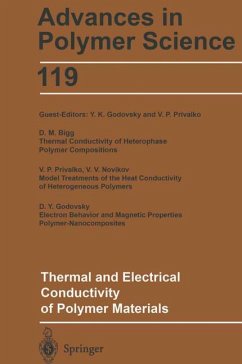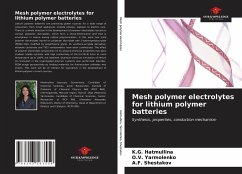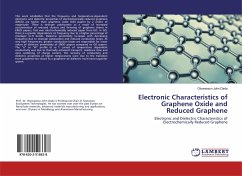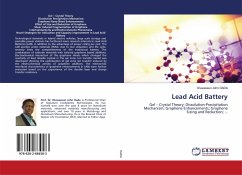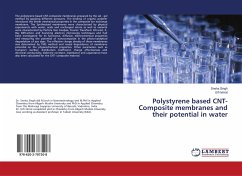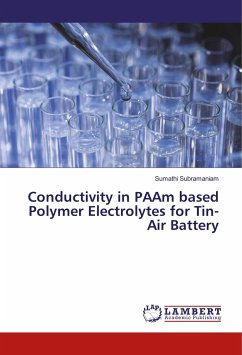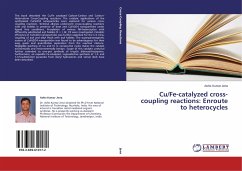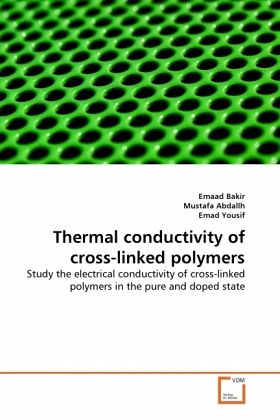
Thermal conductivity of cross-linked polymers
Study the electrical conductivity of cross-linked polymers in the pure and doped state
Versandkostenfrei!
Versandfertig in 6-10 Tagen
32,99 €
inkl. MwSt.

PAYBACK Punkte
16 °P sammeln!
In the electronic industry, there is a need for materials of different electrical conductivities ranging from the semi-conducting to the conducting region. In addition the materials should be easily processable and stable . The synthesis of new electrically conducting polymers with different chemical structures provides an efficient method for the introduction of new materials with the qualifications described above. Furthermore, knowledge of the electrical behavior of a great member of polymers with various chemical structures enables us to understand the relationship between the electrical b...
In the electronic industry, there is a need for materials of different electrical conductivities ranging from the semi-conducting to the conducting region. In addition the materials should be easily processable and stable . The synthesis of new electrically conducting polymers with different chemical structures provides an efficient method for the introduction of new materials with the qualifications described above. Furthermore, knowledge of the electrical behavior of a great member of polymers with various chemical structures enables us to understand the relationship between the electrical behavior and chemical structure, which form the basis for the invention of new polymers with improved properties. In this work, three polymers differ in each other in the percent of nitrogen atoms and in the structure, these polymers are doped with different metal salts (CuCl2 , NiCl2 ,FeCl2 and LiClO4 )and study the electrical properties of the polymers in both pure and doped state at temperature ranged from (25-100 C).



